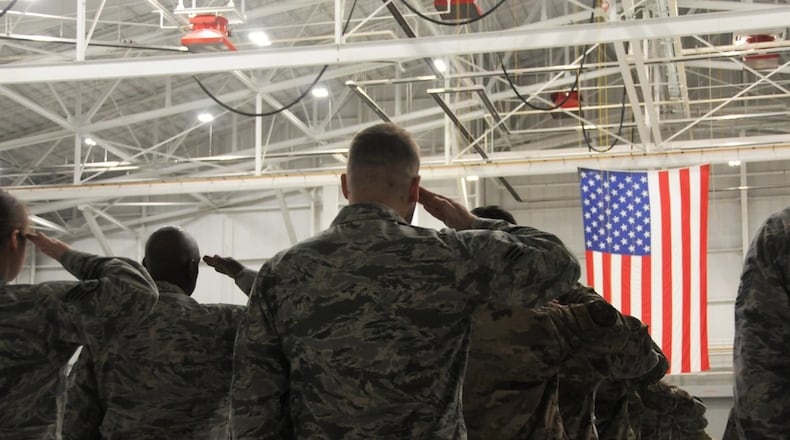“We worked with the services and (and Department of Defense) components to ensure that any of the employees who volunteered to participate … could be approved without negatively impacting the department’s lethality and readiness,” the official said in an official DOD account.
But it hasn’t been possible yet to get clarity on the impact of those retirements on Wright-Patt, where community leaders only last year were publicly celebrating an employment milestone of about 38,000 military and civilian employees, a doubling of the base’s workforce in about two decades.
“The Air Force is currently assessing the potential impact of civilian workforce reductions,” a spokesman for Air Force Materiel Command (AFMC) headquarters at Wright-Patterson said in response to questions from the Dayton Daily News. “As such, we do not have specific information regarding local effects at this time.”
More recently, the spokesman said: “We are unable to release the requested numbers.
“Please check back in a couple of months when hopefully, the DRP (Deferred Resignation Program) participants can be factored in to accurately represent the changing job numbers,” he said.
Numbers may be available at the end of the fiscal year, around Sept. 30, he said.
A spokeswoman for the Department of the Air Force said there should be information from AFMC soon.
A spokesman for U.S. Rep. Mike Turner’s office referred questions about the most recent employment numbers at Wright-Patterson to the Air Force.
In late April, Lt. Gen. Caroline Miller, Air Force deputy chief of staff for manpower, personnel, and services, told the House Armed Services Committee that the service stood to lose about 12,000 civilians.
“We’re going to lose probably about 12,000,” Miller testified. “We’re assessing that right now.”
In his own testimony before the Senate, Chief of Space Operations Gen. B. Chance Saltzman said employee turnover was having an “outsized impact” on the Space Force.
“The civilian workforce by the end of ’25 was supposed to be almost 1,000 (people) larger than it’s going to end up being,” Saltzman testified before the Senate Armed Services Committee in May. “Total reductions have been almost 14 percent of our civilian workforce inside the Space Force.”
In April, the department announced a DRP and a Voluntary Early Retirement Authority for civilian employees, offering a chance for eligible employees to resign or retire while receiving paid administrative leave until Sept. 30.
Other media outlets say they, too, are encountering roadblocks when trying to assess retirement numbers.
“The defense secretary’s office refuses to say how much the workforce has shrunk this year, as it moves forward with a comprehensive review aimed at further slashing numbers of civilian employees,” the Defense One web site reported recently.
About the Author

